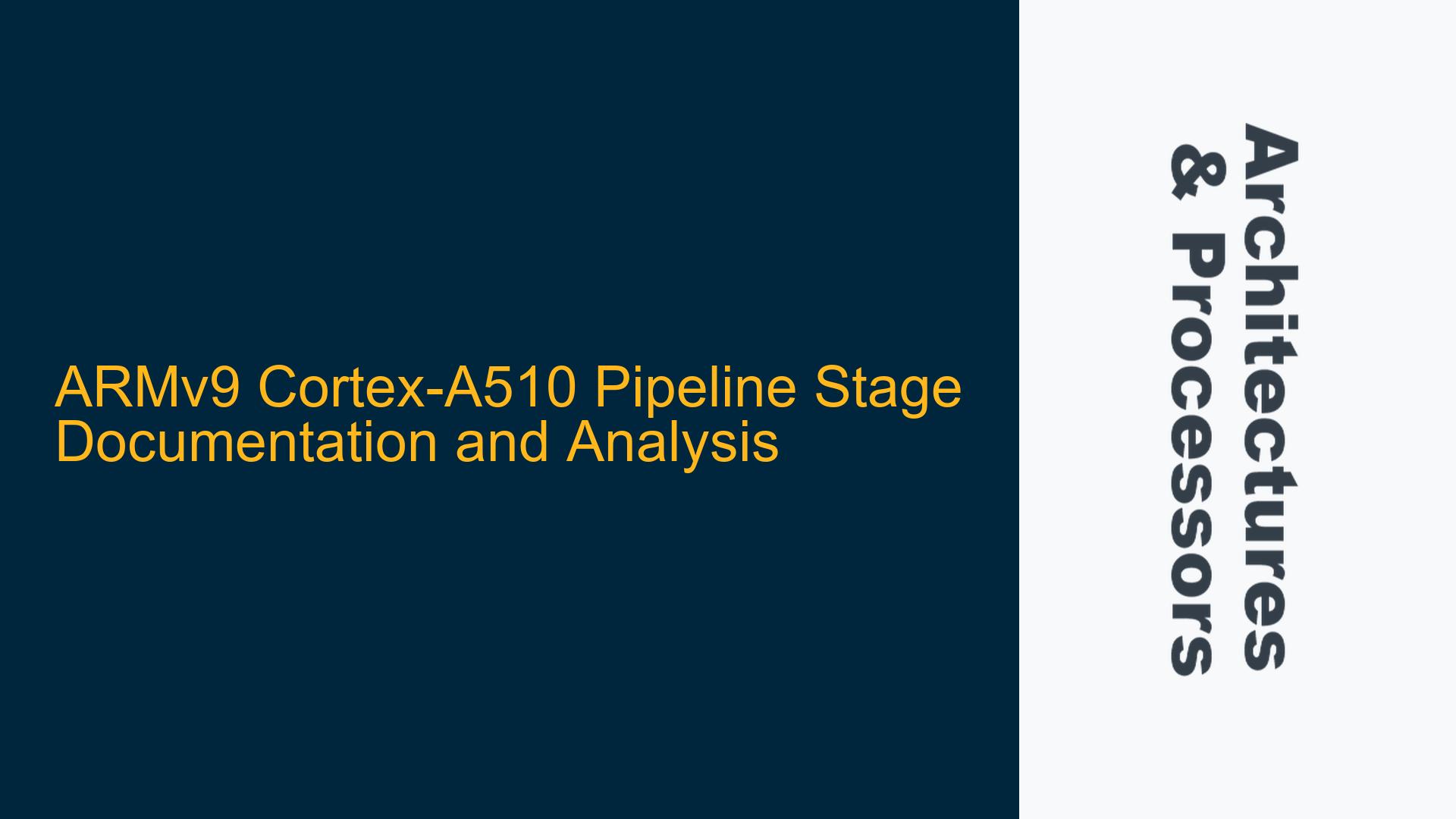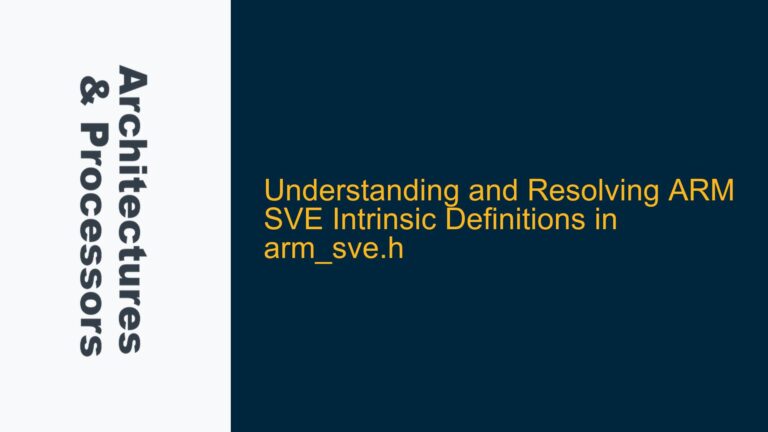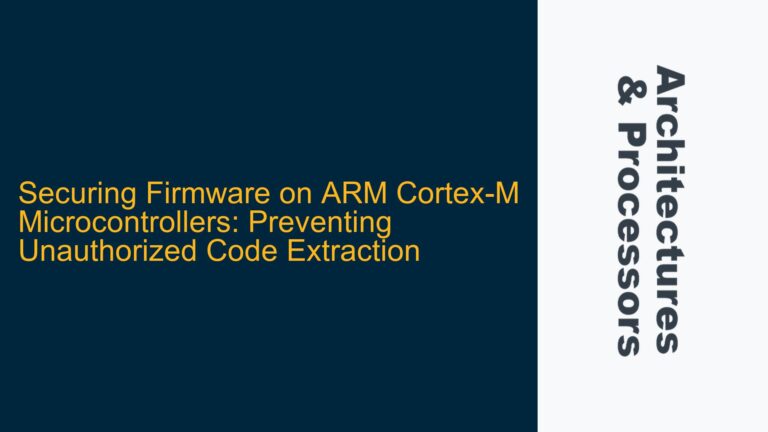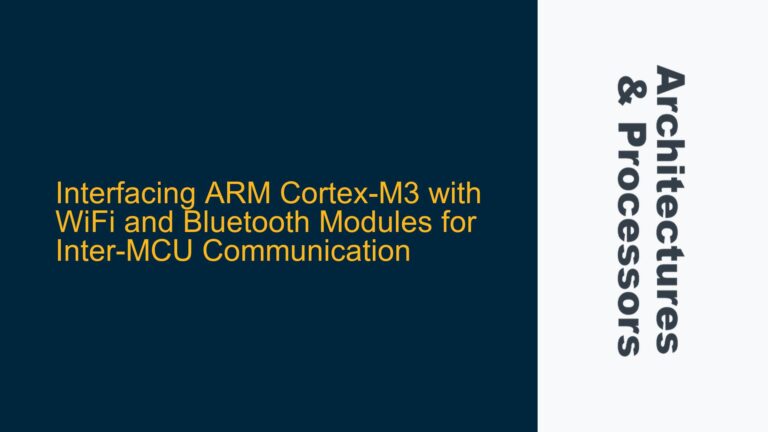ARMv9 Cortex-A510 Pipeline Stage Architecture and Documentation Challenges
The ARMv9 Cortex-A510 is a high-performance, energy-efficient CPU core designed for a wide range of applications, from mobile devices to embedded systems. One of the key aspects of understanding its performance and behavior lies in the detailed knowledge of its pipeline stages. The pipeline architecture of a CPU determines how instructions are fetched, decoded, executed, and retired, and it plays a critical role in the overall performance and efficiency of the processor. However, obtaining detailed documentation on the pipeline stages of the ARMv9 Cortex-A510 can be challenging, as this information is often protected under non-disclosure agreements (NDAs) and not publicly available.
The pipeline stages of the ARMv9 Cortex-A510 are designed to optimize instruction throughput while minimizing power consumption. The pipeline is typically divided into several stages, including instruction fetch, decode, execute, memory access, and writeback. Each stage has a specific function and contributes to the overall performance of the CPU. However, without detailed documentation, it can be difficult to understand the exact workings of each stage, the interactions between stages, and how these interactions affect the performance of the CPU.
The lack of publicly available documentation on the pipeline stages of the ARMv9 Cortex-A510 can be attributed to several factors. First, ARM Holdings, the company behind the ARM architecture, often restricts detailed technical information to licensees who have signed NDAs. This is done to protect intellectual property and maintain a competitive advantage. Second, the complexity of modern CPU architectures, including the ARMv9 Cortex-A510, means that detailed pipeline information is often highly specialized and not intended for general public consumption. Finally, the rapid pace of innovation in CPU design means that documentation can quickly become outdated, making it less useful for those seeking to understand the latest architectures.
Despite these challenges, there are several ways to gain insights into the pipeline stages of the ARMv9 Cortex-A510. One approach is to study the pipeline architectures of earlier ARM cores, such as the Cortex-A55 or Cortex-A77, which share many similarities with the Cortex-A510. Another approach is to consult academic literature and computer architecture textbooks, which often provide detailed explanations of pipeline concepts and their implementation in modern CPUs. Additionally, resources such as wikichip.org may offer high-level diagrams and descriptions of the pipeline stages, although these may not be as detailed as the information available to licensees under NDA.
Pipeline Stage Documentation Gaps and Intellectual Property Restrictions
The primary challenge in obtaining detailed documentation on the pipeline stages of the ARMv9 Cortex-A510 lies in the restrictions imposed by ARM Holdings. As a company that licenses its CPU designs to a wide range of manufacturers, ARM has a vested interest in protecting its intellectual property. This protection extends to detailed technical information about the pipeline stages, which is considered proprietary and is only shared with licensees who have signed NDAs. This means that the general public, including researchers, developers, and enthusiasts, often do not have access to the same level of detail as those who have entered into licensing agreements with ARM.
The restrictions on pipeline stage documentation are not unique to ARM. Many other companies in the semiconductor industry, including Intel, AMD, and NVIDIA, also protect their intellectual property by limiting access to detailed technical information. However, the impact of these restrictions is particularly pronounced in the case of ARM, given the widespread use of ARM-based processors in mobile devices, embedded systems, and other applications. The lack of detailed documentation can make it difficult for developers to optimize their software for ARM-based systems, as they may not have a complete understanding of how the pipeline stages affect performance.
Another factor contributing to the documentation gap is the complexity of modern CPU architectures. The ARMv9 Cortex-A510, like other high-performance CPUs, employs a sophisticated pipeline architecture that includes multiple stages, each with its own set of optimizations and features. Understanding these stages requires a deep knowledge of computer architecture, as well as familiarity with the specific design choices made by ARM. This level of detail is often beyond the scope of publicly available documentation, which tends to focus on high-level overviews and general concepts rather than specific implementation details.
In addition to intellectual property restrictions and complexity, the rapid pace of innovation in CPU design also contributes to the lack of detailed pipeline stage documentation. ARM is constantly evolving its architectures to improve performance, efficiency, and security. This means that documentation can quickly become outdated, as new features and optimizations are introduced with each new generation of CPUs. For example, the ARMv9 architecture, which includes the Cortex-A510, introduces several new features, such as Scalable Vector Extension 2 (SVE2) and Memory Tagging Extension (MTE), which may impact the pipeline stages in ways that are not fully documented in publicly available resources.
Leveraging Predecessor Architectures and Academic Resources for Insights
Given the challenges in obtaining detailed documentation on the pipeline stages of the ARMv9 Cortex-A510, one effective approach is to leverage information from predecessor architectures and academic resources. The ARM Cortex-A510 is part of the ARMv9 family, which builds upon the ARMv8 architecture. By studying the pipeline stages of earlier ARM cores, such as the Cortex-A55 or Cortex-A77, it is possible to gain insights into the design principles and optimizations that are likely to be present in the Cortex-A510.
The Cortex-A55, for example, is a high-efficiency core that shares many similarities with the Cortex-A510. Both cores are designed to provide a balance of performance and power efficiency, making them suitable for a wide range of applications. The pipeline stages of the Cortex-A55 include instruction fetch, decode, execute, memory access, and writeback, with various optimizations to improve throughput and reduce latency. By studying the pipeline architecture of the Cortex-A55, it is possible to infer how similar optimizations might be implemented in the Cortex-A510.
Academic literature and computer architecture textbooks are another valuable resource for understanding pipeline stages. These resources often provide detailed explanations of pipeline concepts, such as instruction-level parallelism, out-of-order execution, and speculative execution, which are relevant to the design of modern CPUs. For example, the textbook "Computer Architecture: A Quantitative Approach" by John L. Hennessy and David A. Patterson provides a comprehensive overview of pipeline architectures and their impact on CPU performance. By applying the concepts and principles discussed in these resources, it is possible to develop a deeper understanding of the pipeline stages in the ARMv9 Cortex-A510.
In addition to academic resources, online platforms such as wikichip.org can provide high-level diagrams and descriptions of the pipeline stages in the ARMv9 Cortex-A510. While these resources may not offer the same level of detail as NDA-protected documentation, they can still be useful for gaining a general understanding of the pipeline architecture. For example, wikichip.org may provide information on the number of pipeline stages, the types of optimizations employed, and the overall flow of instructions through the pipeline. This information can serve as a starting point for further analysis and exploration.
In conclusion, while obtaining detailed documentation on the pipeline stages of the ARMv9 Cortex-A510 can be challenging due to intellectual property restrictions, complexity, and the rapid pace of innovation, there are several strategies for gaining insights into the pipeline architecture. By leveraging information from predecessor architectures, consulting academic resources, and utilizing online platforms, it is possible to develop a deeper understanding of the pipeline stages and their impact on CPU performance. This knowledge can be invaluable for developers seeking to optimize their software for ARM-based systems and for researchers studying the design and implementation of modern CPUs.






